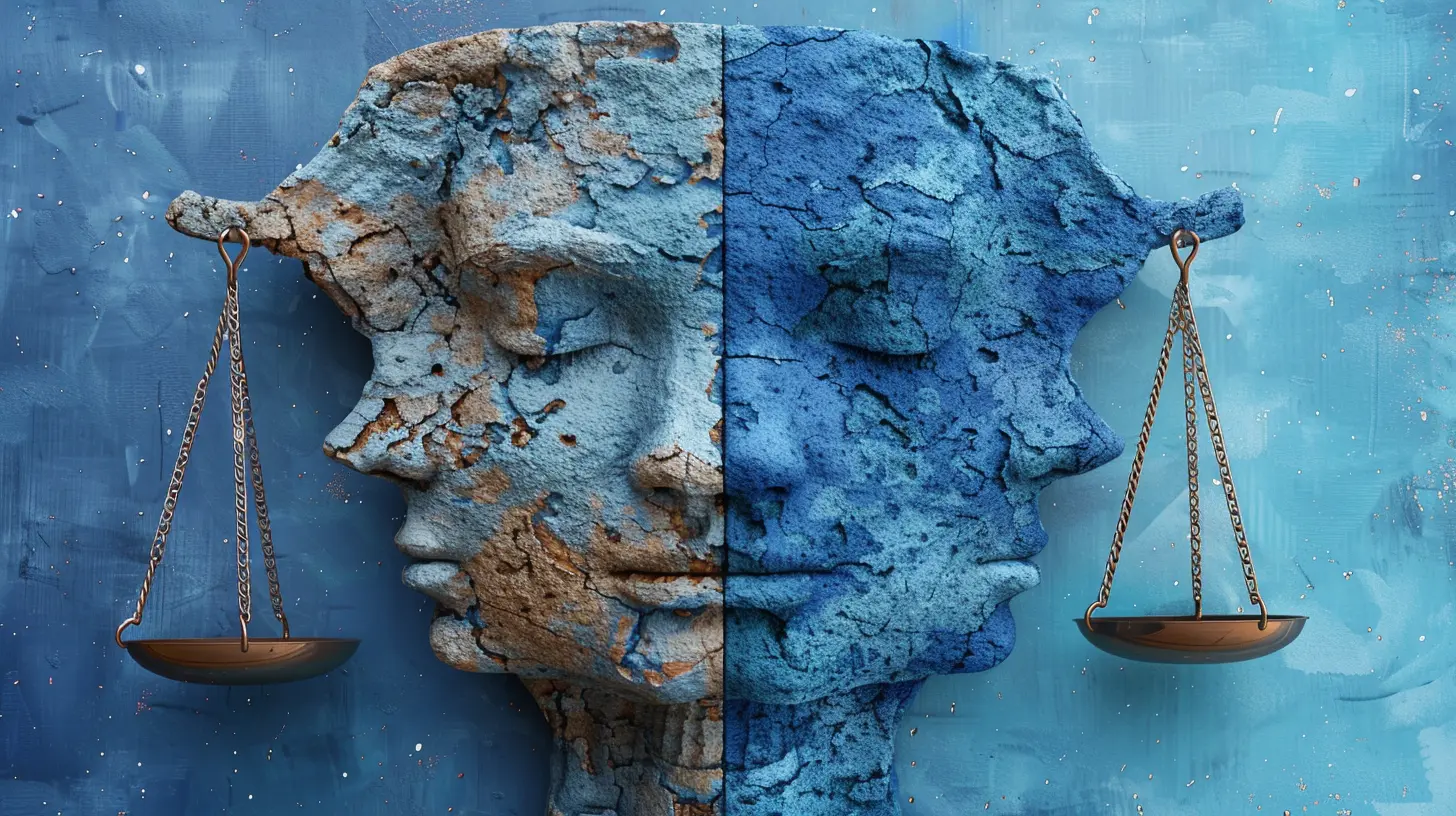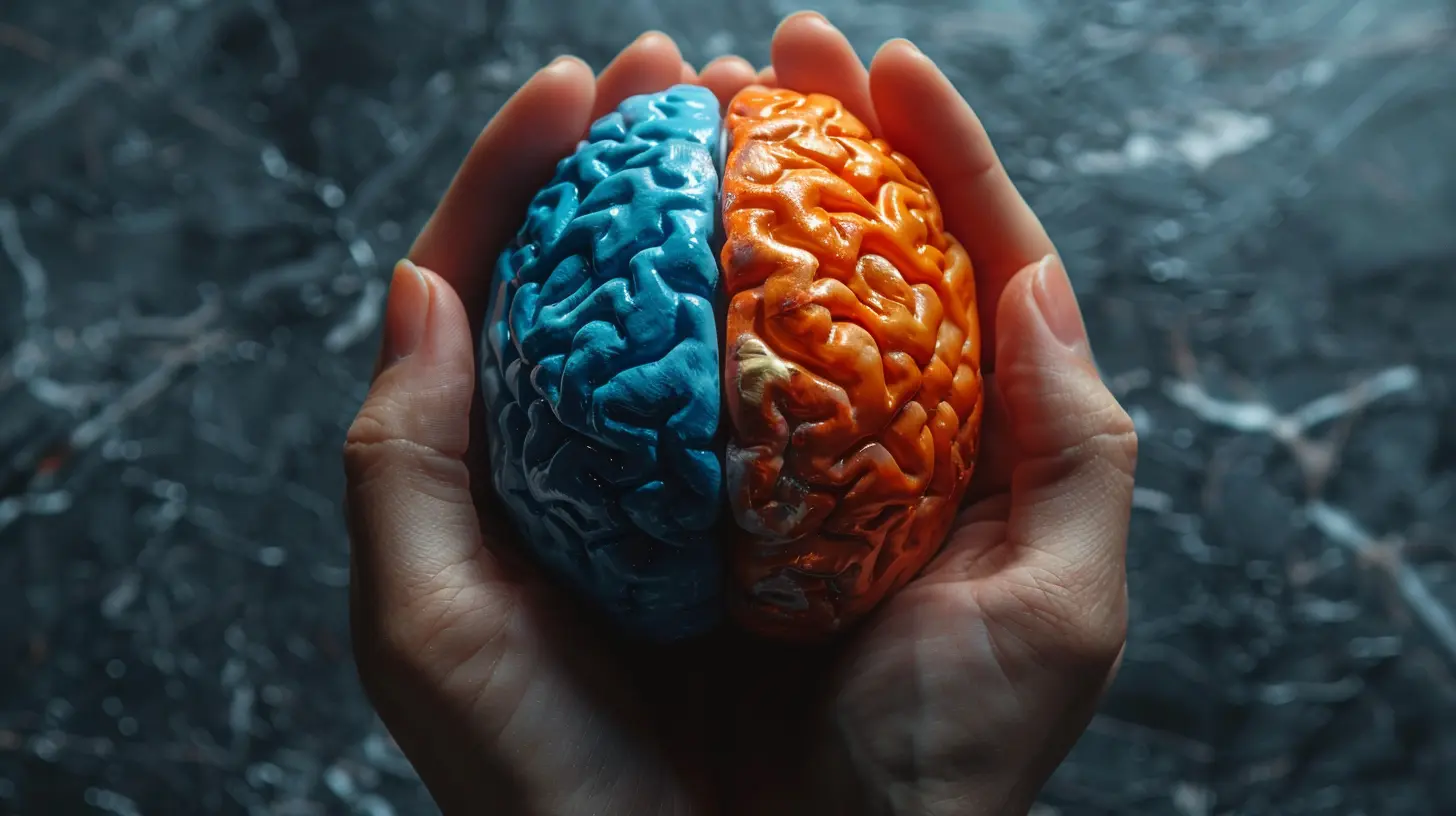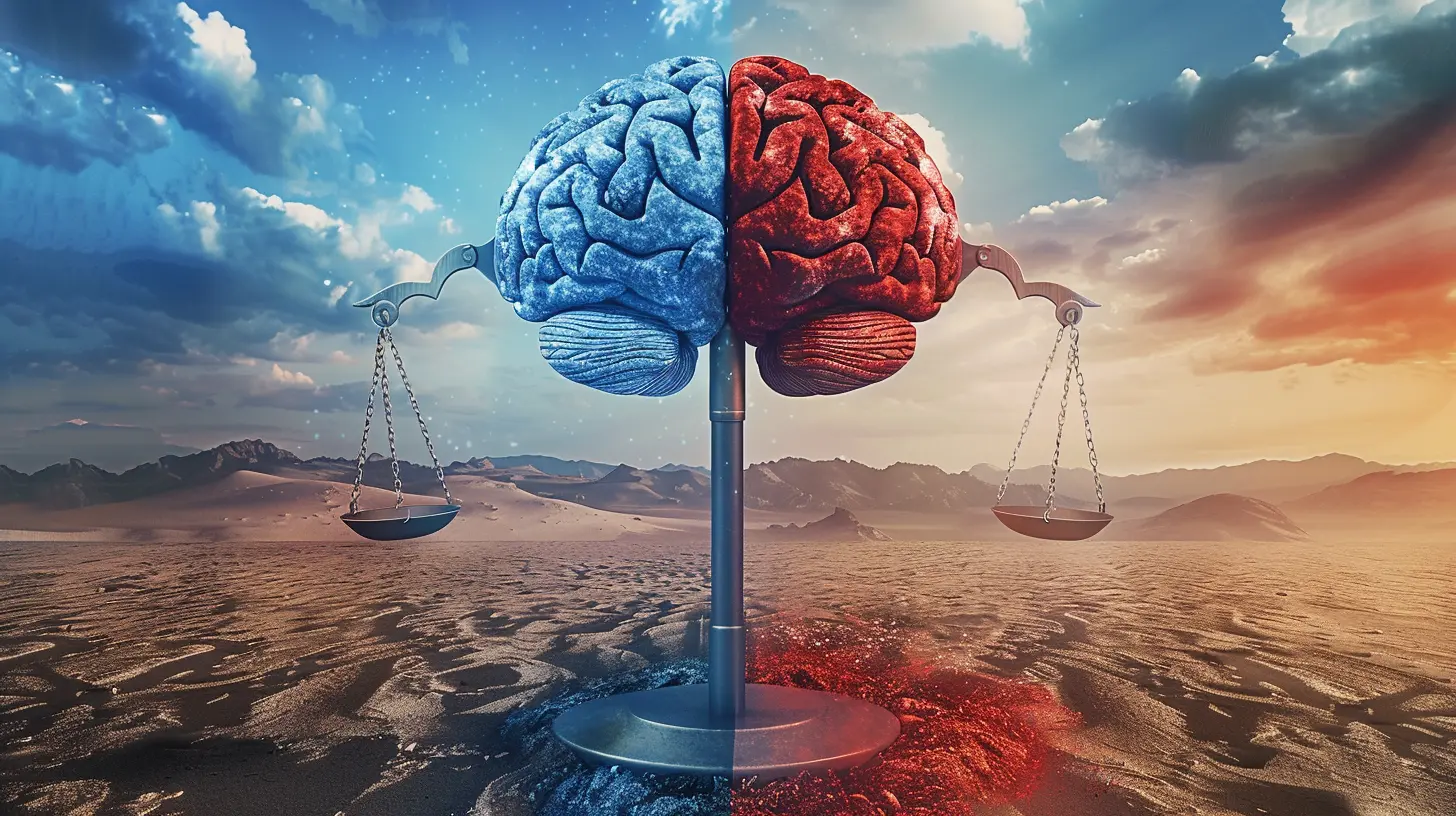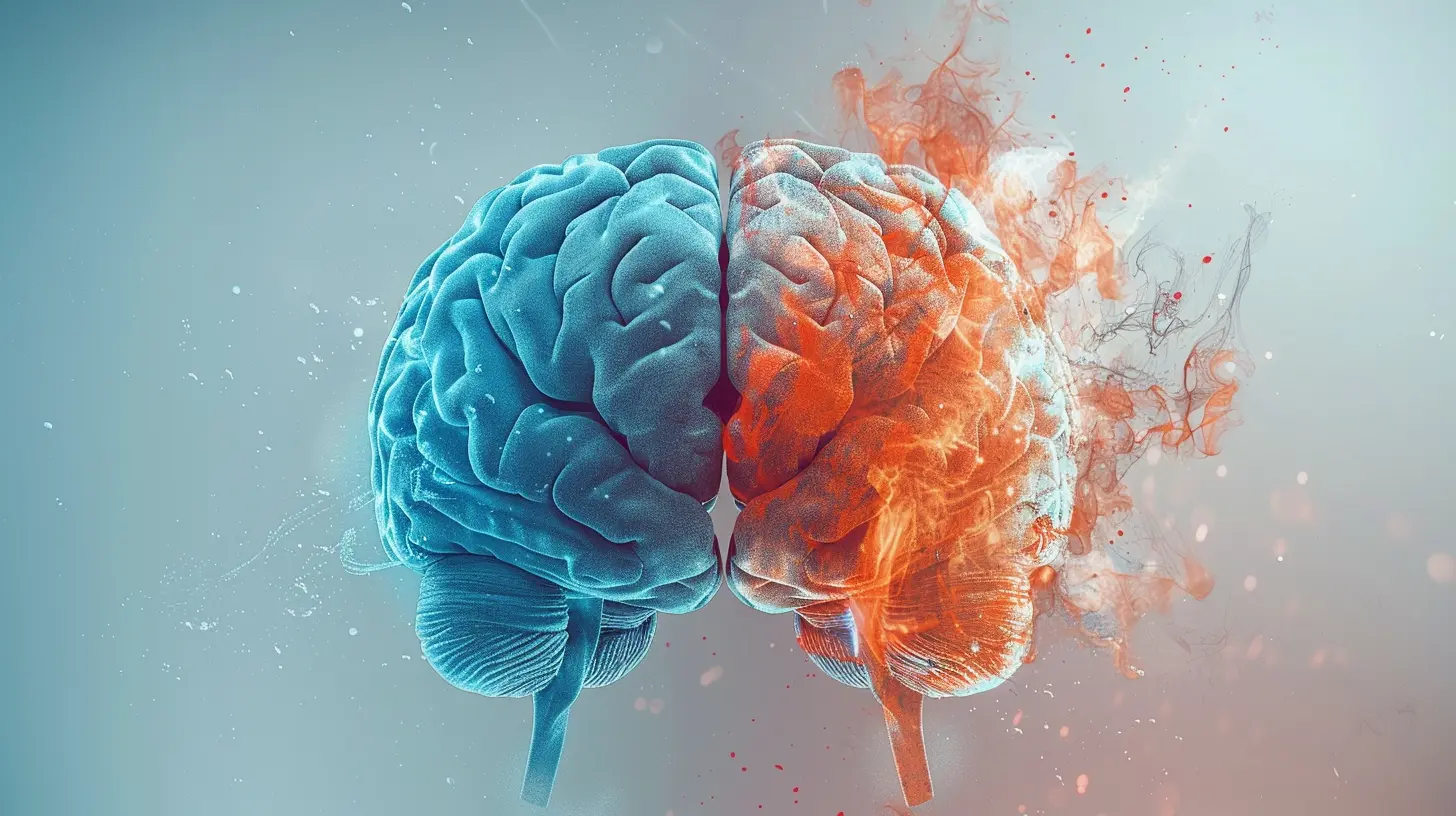How the Brain Balances Logic and Emotion in Decision-Making
10 July 2025
Ever found yourself torn between what your heart wants and what your head says? Yep, you’re not alone. Every day, we make decisions that pull us in opposite directions—one led by cold, hard logic and the other steered by raw emotion. Sometimes, it’s a simple tug-of-war, like choosing between a decadent dessert or sticking to your diet. Other times, the stakes are way higher—think career moves, relationships, or financial decisions.
But how exactly does your brain juggle these opposing forces? Is there a referee sitting up there in your skull, blowing a whistle when emotion tries to dominate logic—or vice versa?
Well, it's a fascinating mix of science and psychology. So buckle up, because we’re diving deep into how the brain balances logic and emotion in decision-making.
The Brain’s Decision-Making Powerhouses: Meet Logic and Emotion
Before we get into the nitty-gritty, let’s get acquainted with the key players.The Rational Thinker: Prefrontal Cortex
This is where your "inner Spock" lives. The prefrontal cortex is your brain’s CEO—the one responsible for logical thinking, planning, and weighing pros and cons. It’s the reason you don’t punch your boss when you’re angry (hopefully).What it does:
- Analyzes data
- Considers consequences
- Sets long-term goals
- Controls impulses
The Emotional Advisor: Amygdala
Located deep in the brain’s temporal lobe, the amygdala is like your internal alarm system. It processes and triggers emotional responses—especially fear, pleasure, and anger. Think of it as your “gut instinct” center.What it does:
- Reads emotional cues
- Reacts quickly
- Activates fight-or-flight responses
- Links emotions to memories
So, one is like your wise, calculating mentor and the other your passionate best friend. Balancing their inputs is how you make decisions that are both smart and human.
Logic vs. Emotion: The Eternal Brain Tug-of-War
Here’s the deal: You’re wired to use both logic and emotion when making choices. But these two areas of the brain don’t always play nice. Sometimes they work together, and other times, they’re on completely different pages.The Biological Push & Pull
Here’s where things get juicy. Different situations trigger different brain responses. For example:- Urgent, high-stress scenarios? The amygdala often takes the wheel. Ever reacted to something in the heat of the moment and regretted it later? That’s your emotional brain calling the shots before your logical brain has time to weigh in.
- Complex, slow-burn decisions? That’s when your prefrontal cortex gets more airtime. Like deciding which house to buy or whether to take that new job.
The key takeaway? Timing and context dictate which brain region gets top billing.
Why We Need Both to Make Good Decisions
Let’s break a myth here. People often assume that logical decisions are “better,” but that’s not always true. Emotion isn’t the enemy—it’s part of the process.Emotion Adds Meaning
Imagine making decisions based purely on data. Cold, calculated, and… totally disconnected. You might choose a job that pays well but makes you miserable. Or marry someone perfect on paper, but with zero chemistry.Emotions help you understand what really matters to you. They give weight to your values, needs, and desires. Without them, decisions would feel empty.
Logic Keeps You Grounded
Of course, on the flip side, emotion without logic can lead to impulsive or damaging choices. Ever sent a text you wish you could unsend? Yeah. That’s what happens when the emotional brain runs unfiltered.Logic acts as a reality check. It gives you the tools to pause, reflect, and predict outcomes. It helps you avoid the trap of short-term satisfaction in favor of long-term gain.
Real-Life Examples of Logic vs. Emotion in Action
Let’s paint a few relatable pictures.1. Deciding Whether to Break Up
- Logic says: They don’t treat you well, and your values don’t align.- Emotion says: But I love them, and I can’t imagine life without them.
This is classic head vs. heart. The emotionally driven attachment clouds what the logic is screaming at you: run!
2. Quitting Your Job to Follow a Passion
- Emotion says: I need to feel fulfilled, I hate my job!- Logic says: You have bills to pay, and that dream career isn’t stable yet.
We’ve all had that fantasy of walking out and flipping the bird to a soul-crushing job. But logic steps in to say, “Maybe wait till you have savings?”
3. Eating That Chocolate Cake
- Emotion says: Treat yourself! You had a rough day.- Logic says: That doesn’t fit with your health goals.
These little micro-decisions add up—and they reflect how often we’re balancing emotion and logic even in the tiniest moments.
The Neuroscience Behind Decision-Making: A Quick Dive
Don’t worry, we’re not getting too science-y here—but understanding what happens under the hood is super cool.The Ventromedial Prefrontal Cortex (vmPFC)
This part of the brain is where logic and emotion actually meet. It integrates emotional input from the amygdala and logical data from other parts of the prefrontal cortex. Studies show that damage to the vmPFC can lead to poor decision-making—even if memory and intelligence are perfectly intact.Translation: You need both emotion and logic to make smart choices.
Neurotransmitters: The Brain’s Chemical Whisperers
Hormones like dopamine (the “reward” chemical) and cortisol (stress hormone) also influence decision-making.- High dopamine? You might chase risky rewards.
- High cortisol? Stress can cloud judgment and push emotional responses.
Basically, your brain is a chemical cocktail that needs the right balance to make healthy decisions.
How to Strengthen the Balance: Tips for Better Decision-Making
So now that you know how it works, how can you actually improve the harmony between logic and emotion in your own life?1. Pause Before You Decide
That split-second pause can give your prefrontal cortex a chance to check in. Instead of reacting on impulse, ask yourself: “Is this choice driven by emotion, logic, or both?”2. Label Your Feelings
Sometimes we can’t even name what we’re feeling—and that makes it harder to process. Try saying, “I feel frustrated,” or “I’m anxious about failing.” Naming the emotion helps your brain start to regulate it.3. Play Devil’s Advocate
Challenge your emotional responses with logical questions. If you’re mad at someone, ask: “Is this going to matter a week from now?” If you’re scared to take a risk, ask: “What’s the worst-case scenario, and can I handle it?”4. Use Decision-Making Frameworks
Try techniques like:- Pros and Cons list
- Decision matrix
- 6 Hats Thinking Method
These help bring structure to emotional chaos.
5. Reflect on Past Decisions
Think back to a time when you let emotion or logic dominate. How’d that turn out? Use that insight to guide future decisions. Experience is a great teacher—if you're willing to learn.When the Balance Breaks: Emotional Dysregulation & Over-Analysis
Let’s keep it real—there are times when either side takes over and leads to trouble.Emotional Hijacking
This is when your amygdala goes rogue before your logical brain gets a chance to step in. You yell, cry, or act impulsively—and regret it later.Want to reduce this? Practice mindfulness, deep breathing, or just walking away to cool off.
Paralysis by Analysis
On the flip side, leaning too heavily on logic can lead to inaction. You overthink, overanalyze, and end up making no decision at all. Ironically, not choosing is still a choice—and often not a great one.Sometimes, trusting your gut (your emotional brain) is exactly what you need.
Final Thoughts: Embrace the Duality
Here’s the truth: logic and emotion aren’t enemies. They’re teammates. They’re yin and yang, Batman and Robin, peanut butter and jelly.Your best decisions happen when you listen to both voices, weigh their input, and let them guide you toward choices that are not only smart—but meaningful.
Next time you're stuck at a crossroads, don’t silence one side. Instead, invite both to the table, hear them out, and then make your move.
Because when your head and heart are aligned? That’s where the magic happens.
all images in this post were generated using AI tools
Category:
Cognitive ScienceAuthor:

Christine Carter
Discussion
rate this article
1 comments
Abram Chavez
This article highlights the delicate interplay between logic and emotion in decision-making, reminding us that both elements are crucial for balanced choices. Great insights!
July 19, 2025 at 4:13 PM

Christine Carter
Thank you for your thoughtful feedback! I'm glad you found the insights valuable in understanding the balance between logic and emotion in decision-making.


